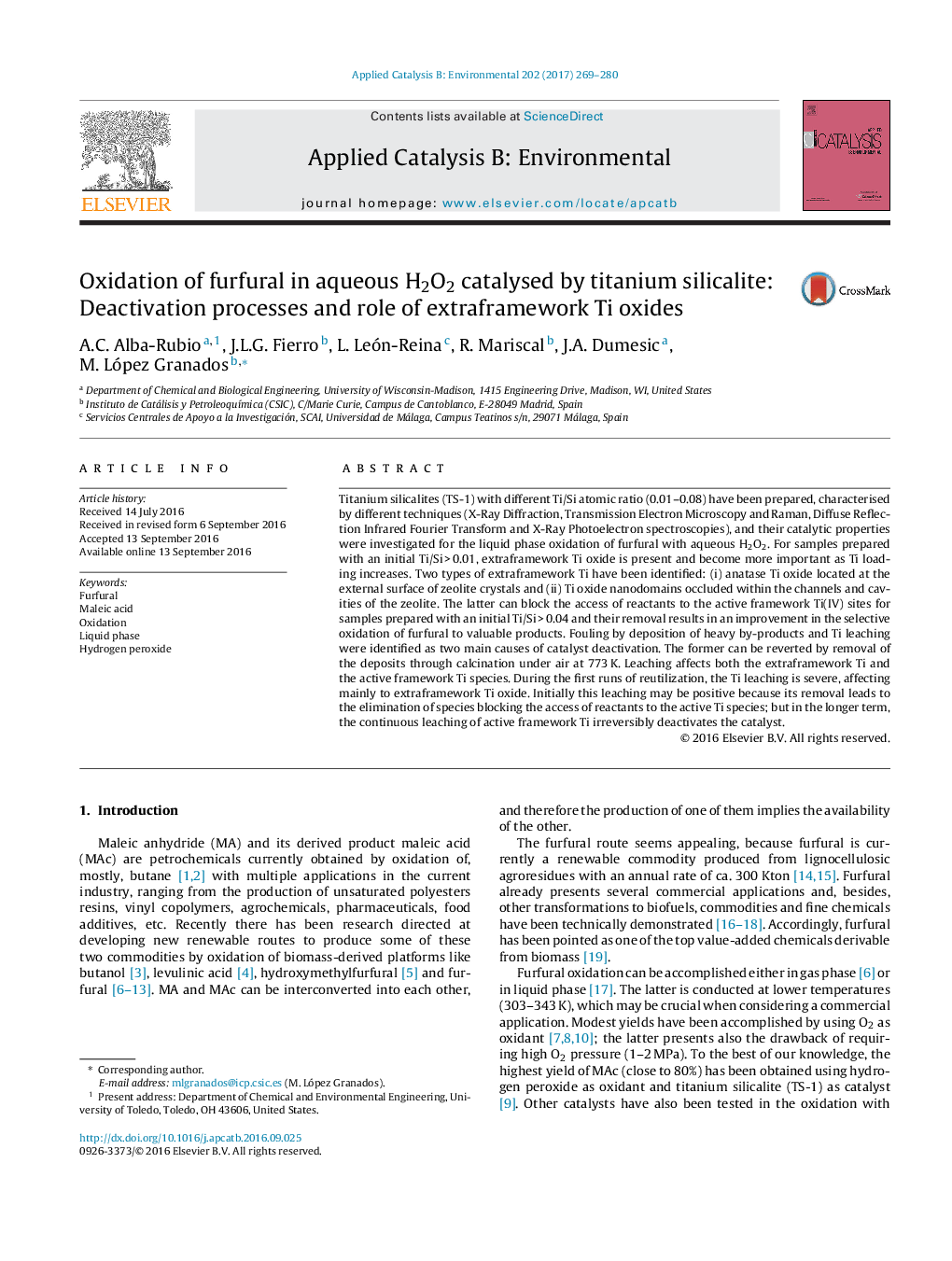| کد مقاله | کد نشریه | سال انتشار | مقاله انگلیسی | نسخه تمام متن |
|---|---|---|---|---|
| 6454837 | 1418818 | 2017 | 12 صفحه PDF | دانلود رایگان |

- The use of TS-1 for the oxidation of furfural to maleic acid with H2O2 is reported.
- Extraframework TiO2 nanodomains can also be located in the channels and cavities of TS-1.
- When present, it blocks the access of reactants to active sites.
- Coke deposition and Ti leaching are identified as the main causes of deactivation.
Titanium silicalites (TS-1) with different Ti/Si atomic ratio (0.01-0.08) have been prepared, characterised by different techniques (X-Ray Diffraction, Transmission Electron Microscopy and Raman, Diffuse Reflection Infrared Fourier Transform and X-Ray Photoelectron spectroscopies), and their catalytic properties were investigated for the liquid phase oxidation of furfural with aqueous H2O2. For samples prepared with an initial Ti/Si > 0.01, extraframework Ti oxide is present and become more important as Ti loading increases. Two types of extraframework Ti have been identified: (i) anatase Ti oxide located at the external surface of zeolite crystals and (ii) Ti oxide nanodomains occluded within the channels and cavities of the zeolite. The latter can block the access of reactants to the active framework Ti(IV) sites for samples prepared with an initial Ti/Si > 0.04 and their removal results in an improvement in the selective oxidation of furfural to valuable products. Fouling by deposition of heavy by-products and Ti leaching were identified as two main causes of catalyst deactivation. The former can be reverted by removal of the deposits through calcination under air at 773 K. Leaching affects both the extraframework Ti and the active framework Ti species. During the first runs of reutilization, the Ti leaching is severe, affecting mainly to extraframework Ti oxide. Initially this leaching may be positive because its removal leads to the elimination of species blocking the access of reactants to the active Ti species; but in the longer term, the continuous leaching of active framework Ti irreversibly deactivates the catalyst.
318
Journal: Applied Catalysis B: Environmental - Volume 202, March 2017, Pages 269-280